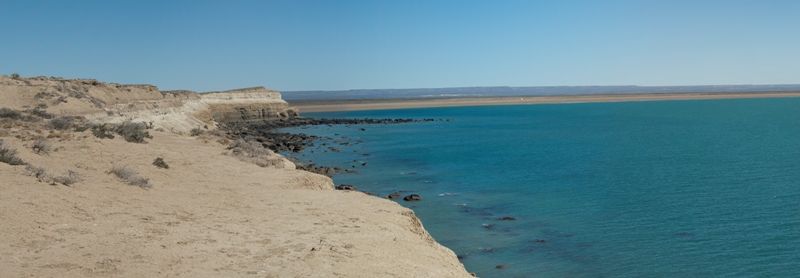
Argentine Wildlife Gain 2 New Marine Parks

Two new large wildlife reserves have been created in Argentina's Patagonian coast, good news for the area's diverse wildlife.
The parks, Isla Pingüino Coastal Marine Park and Makenke Coastal Marine Park, are home to penguins, sea lions, dolphins and other animals, which will receive more protections under the designation, according to a release from Wildlife Conservation Society (WCS), an environmental group.
The Isla Pingüino Coastal Marine Park extends 12 miles (19 kilometers) out to sea, encompassing some 720 square miles (1,800 square kilometers) of ocean and cliff-bordered coastline. It's home to South American sea lions, red-legged cormorants and one of the biggest colonies of imperial cormorants in the world (with more than 8,000 breeding pairs). The park also hosts one of the only colonies of rockhopper penguins in the country, according to the WCS.
The Makenke Coastal Marine Park, farther to the south, is home to the biggest group of rare red-legged cormorants in the country. Visitors can also find dolphin gulls and Commerson's dolphins in the area, the WCS noted. [Photos of the new marine reserves.]
Each park, established by the Argentine National Congress, is known for its historical significance. In 1833, Charles Darwin voyaged to Isla Pingüino on the HMS Beagle, writing about the wildlife he found there. Ferdinand Magellan passed by what is now Makenke Coastal Marine Park on his first voyage around the world, marooning and executing a group of mutineers on the coast there.
"We commend the Government of Argentina for their conservation stewardship in creating this new network of marine protected areas," said Cristián Samper, WCS president, in a statement. "Isla Pingüino and Makenke Coastal Marine Parks now protect vital wildlife populations for posterity and create new opportunities for Argentina's ecotourism industry."
Email Douglas Main or follow him @Douglas_Main. Follow us @OAPlanet, Facebook or Google+. Original article on LiveScience's OurAmazingPlanet.
Sign up for the Live Science daily newsletter now
Get the world’s most fascinating discoveries delivered straight to your inbox.










